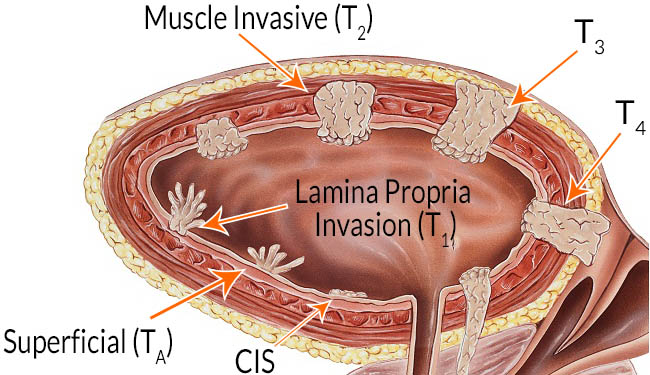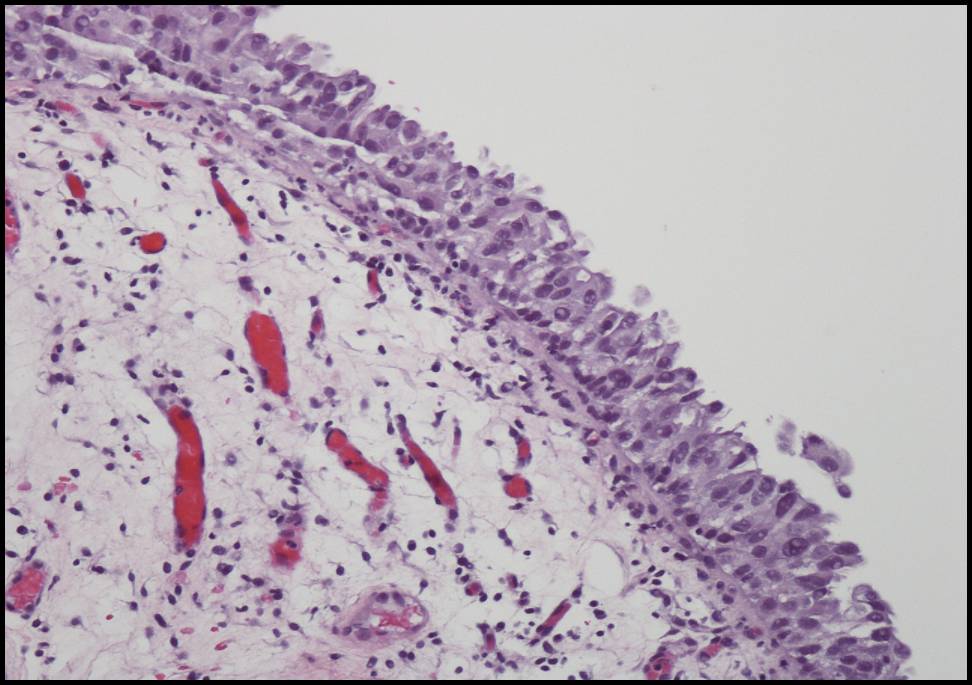In the previous blog, I shared the testimonial of a person’s recovery who has bladder cancer and took Fucoidan. In this blog, I would like to show the research on how Fucoidan helps in fighting bladder cancer. Bladder cancer’s 5-year survival rates are approximately 90% in stage 0a, 83% in stage 0is, 87% in stage I, 77% in stage II, 50% in stage III, and 28% in stage IV. Superficial bladder cancer is rarely fatal. However, it is characterized by multiple and repeated occurrences in the bladder. If this research helps people who suffer from bladder cancer, I would be glad beyond expression.
Bladder cancer is more common among men than women. It is said that the highest cases are found in the age category of the 70s. Bladder cancer is also caused by smoking. Also, people who work with dyes and chemicals tend to have occupational bladder tumors. These are caused by chronic exposure to chemicals such as aniline, benzene, and naphthylamine.
Bladder cancer can be divided into two types. They are superficial and invasive bladder cancer.
- Superficial bladder cancer
Superficial bladder cancer develops in the lumen as a papillary (cauliflower-like). It does not invade the bladder wall (muscle layer). Approximately 70% of bladder cancers are of this type and are not severe enough to be life-threatening. However, they are characterized by natural recurrence.
- Invasive bladder cancer
Invasive bladder cancer, on the other hand, invades the bladder wall, progresses quickly, and is likely to cause early metastasis to lymph nodes and other organs. Another particular type is intraepithelial neoplastic. It does not take the form of a tumor and cannot be identified on CT or other images. However, it is easy to progress into invasive cancer, and it is considered similar to invasive cancer.

Then how does Fucoidan help to inhibit bladder cancer?
According to Min Ho Han et al., DNA must be replicated to take over its genes in cell division. Enzymes, DNA polymerases will do DNA replication. However, as the end portion of DNA is not entirely replicated, the end of the part becomes gradually shorter, and the chromosome loses gen information. It cannot be repaired as the DNA replication enzyme only moves from 5’to 3′. Hence there is a terminal structure containing a new DNA sequence called a telomere, and it prevents the loss of the genetic information. However, ultimately when the shortening of DNA reaches the limit, replication will stop, and cell division does not occur anymore, and the cell life span is completed. This is a standard mechanism of the cellular aging structure.
In contrast, cancer cells are activated by telomerase, an enzyme that synthesized and regenerate telomere, and the length of the telomeres is stably maintained. As for the result, cancer cells divide and proliferate infinitely.
Fucoidan extracted from naturally derived brown algae has been confirmed to induce apoptosis in many cancer cells. However, the underlying relationship between apoptosis and anti-telomerase activity has not been investigated. In this study, we clarified that Fucoidan derived from Fucus vesiculosus induced apoptosis in the human bladder cancer cell.
(Experiment and Result)
First, we measured cell survival of human bladder cancer 5367 rates when it was treated by Fucoidan examined from Focus vesicles (10, 25, 50, 100 μg/ml). As a result, decreasing the survival rate of bladder cancer in 5367 was confirmed by more than 25μg/ml of Fucoidan significantly comparing with the cells untreated by Fucoidan.
Next, to analyze the cancer cell apoptosis mechanism, we observed the volume of ROS (Reactive Oxygen Species) that play an essential role in apoptosis induction by using the DCFDA fluorescent probe. DCFDA measures reactive oxygen and nitrogen species with the fluorescent probe in the cells. As for the result, when cancer cells were treated with Fucoidan, ROS production in the cancer cells began to increase. Additionally, as the fluorescence derived ROS decreased by adding anti-oxidant NAC, the viability of the cells recovered cells. (not listed data)
Moreover, to further investigate the effect of Fucoidan on telomerase activity, telomerase activity was measured. The results showed that the telomerase activity was 60% reduced by Fucoidan (Fig.2). Also, telomerase activity was returned 90% by adding NAC. Therefore, these results suggest that the inhibition of telomerase activity by Fucoidan is mediated in a ROS-dependent manner (Fig.2).
The P13K/Akt pathway is one of the most important signaling networks in the course of initiation and progression of many cancers. Therefore we postulated that Fucoidan inhibited the P13K/Akt signaling of 563 cells, we investigated the expression and phosphorylation levels of P13K and Akt, a downstream effector of P13K, after treatment with Fucoidan. As a result, the amount of phosphorylated P13K and Akt in the fucoidan-exposed cells was much less than in the untreated cells. Still, NAC pretreatment protected Fucoidan – induced dephosphorylation of P13K and Akt in 5637 cells (Fig.3). In other words, these results may indicate that the generation of ROS by Fucoidan plays a crucial role in the inhibition of telomerase activity by suppressing the P13K/Ak pathway.
In this study, we found the induction of apoptosis and the inhibition of telomerase activity by Fucoidan are cleared to be accompanied by ROS-mediated suppressed P13K/Akt activity in 5637 bladder cancer cells. Further research and use of Fucoidan is expected in the future.


